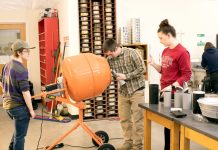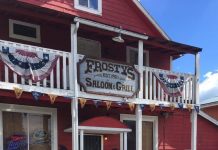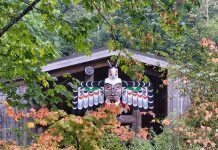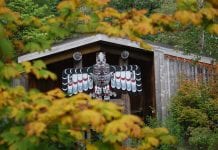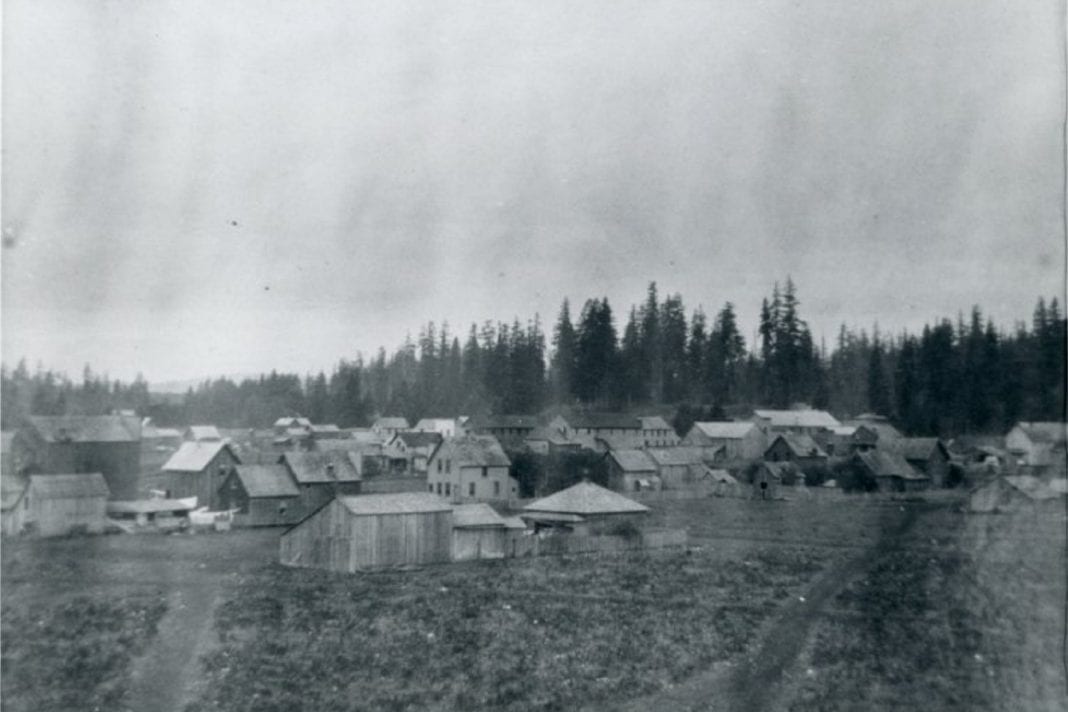Way up in the Willapa Hills at the western end of Lewis County, the Chehalis River begins its journey to the sea. Flowing peacefully down the mountain slopes through dense forests of fir and cedar trees, the river makes its way to a beautiful secluded valley surrounded by gentle hills.
Before the white man came, the valley was home to the Kwalhiokwa people of the Cowlitz tribe. Today, it is home to Pe Ell, a small, quiet town that surprisingly was once the bustling center of a thriving timber industry.
The first settler in the Pe Ell area was most likely Pierre Charles, a French Canadian trapper and former employee of the British Hudson’s Bay Company. Many historians agree that Pe Ell derives its name from this man. Some say Pe Ell stands for P.L., the initials of his first name and the first name of his Indian wife. Others say the native people could not pronounce Pierre, so they called him Pe Ell. Either way, the unusual name stuck.
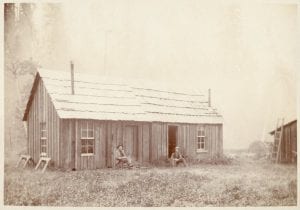
It wasn’t long before more settlers arrived. In 1855, the Mauermann family arrived by wagon after a long, difficult journey that originally began in Austria. Joseph Mauermann, his wife Karolina (Caroline), and their eight children were the first permanent settlers in the area.
Although they lived in such a beautiful valley with rich farmland, life was extremely challenging. Imagine how frightened the children must have been when they saw huge gray timber wolves roaming on their land! The family had to use deer and cougar tallow to make candles because nothing else was available for light. And with no other settlers around, Mrs. Mauermann must have been very lonely. It was nine years before she had her first guest. In spite of these hardships, the Mauermann’s farm prospered thanks to the rich valley soil.
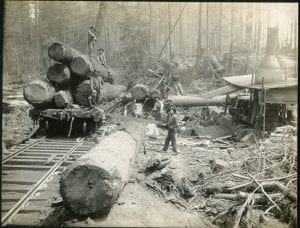
A large number of Pe Ell’s early settlers were Polish. German, Austrian, and Swiss immigrants also flocked to the area. Surprisingly, it was not the good farmland that caused Pe Ell to flourish. It was the rich timberlands. Old-growth forests with enormous fir and cedar trees brought growth, development, and prosperity to the valley.
In 1892, the Northern Pacific Railroad laid train tracks to Pe Ell and soon mills were popping up almost every two miles along the rails. W.C. Yeoman built the first large mill near the site of the train depot.
By the early 1900s, Pe Ell grew into a bustling logging center boasting three sawmills, three shake mills, a broom handle factory, and a booming downtown. Soon after being incorporated in 1906, the town grew to include several hotels, a bank, post office, newspaper, stores, churches and a large school. As the population in the area swelled, more businesses sprung up to entertain the working men. Bowling alleys, carousels, dance halls, movie theaters, three pool halls, and numerous saloons were built. At one time, Pe Ell even had an opera house.
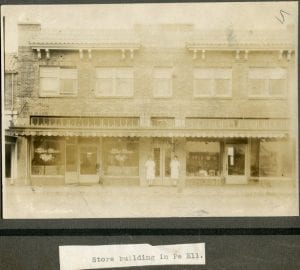
Sadly, the Great Depression in the early 1930s brought an end to Pe Ell’s prosperity. Mills shut down. Businesses closed. Many moved away.
Today, Pe Ell is much smaller and quieter. The busy railroad tracks that once transported millions of feet of old-growth Douglas fir and red cedar from Pe Ell to the world have been removed.
The gravel path that remains is now part of the Willapa Hills trail system, enjoyed by walkers, bikers, and horse riders alike. The path’s trailhead in Pe Ell was built on the same site as the old train depot. And nearby, in the tall trees that mark the trail’s entrance, is the old mill pond, a reminder of the days when timber ruled the town. Imagine the stories it could tell!









